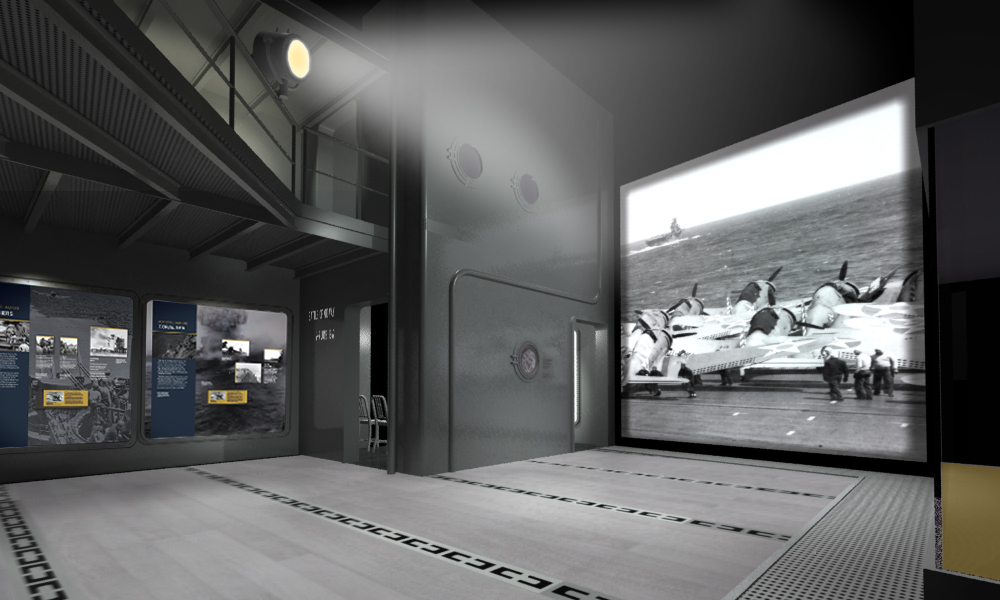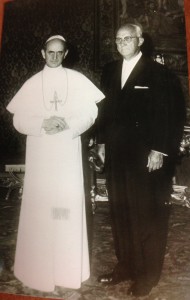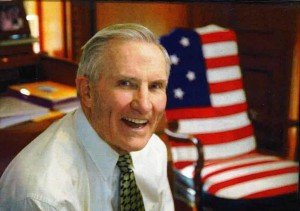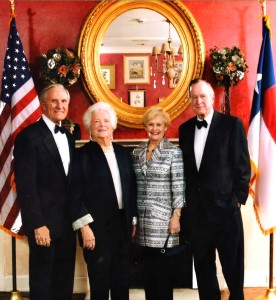Road to Tokyo Countdown: Life Aboard Ship
Serving in the Navy in the Pacific during World War II presented a unique set of advantages and challenges which differed from the experiences of other service men and women. Life aboard ship was characterized by cleaner environments and the availability of better food than in the life of an infantryman. However, engaging in naval combat with the Japanese was often intense and terrifying, and required precision and level-headedness under fire. Battles had a high risk of casualties, as men could easily become trapped when aboard a sinking vessel.
As we travel through Road to Tokyo, and within the New Naval Warface gallery, the Life Aboard Ship exhibit will convey the experiences of the men and women in US Navy, from the ordinary to the extraordinary, of being onboard ships in the vast Pacific Ocean.
Donor Spotlight- Strake Foundation
The Life Aboard Ship exhibit has been made possible through a generous donation by the Strake Foundation.
George W. Strake was born in 1894, and raised in St. Louis, MO. He was the youngest of nine children and both of his parents passed away when he was very young. His first job was as a Western Union runner making $10 a week and putting $2 of his weekly salary into the Sunday church collection basket. Though he did not attend high school, he was admitted to St. Louis University after taking an entrance exam. Upon graduation, the United States was in World War I. He joined the Army in Florida, and became a wireless instructor in the Army Air Corps. He fell in love with a young lady from Florida but he would not marry her because “she had more money than I did.” She suggested to him to travel to Mexico as “that’s where the fortunes were going to be made.”
He followed her advice and moved to Tampico, Mexico. He began working with Gulf Oil Co. where he remained for two years. After leaving Gulf Oil Co., he began putting drilling deals together for fellow Americans. He married Susan Kehoe, from Houston, Texas. They had their first child, Betty Sue, in Houston, and they lived for a total of seven years in Tampico, Mexico.
The family then moved to Havana, Cuba where Strake sought to explore for oil but took on the Hutmobile dealership, in hopes of a quicker cash flow. Unfortunately, the dealership turned out to be an unsuccessful venture. After residing in Havana for two years, they family decided to move back to the United States. His intent was to move to Oregon to go into the timber business, but his mother-in-law became ill in Houston. In order to keep himself occupied while in Houston, Strake began putting drilling deals together in Texas. His signature accomplishment was drilling the discovery well in the Conroe Field, southwest of Conroe, Texas, in 1931. Prior to independently drilling the discovery well, he was turned down by eight major oil companies, who choose not to participate.
It was after the discovery of the Conroe Field that Strake established the Strake Foundation. This allowed him and his wife an opportunity to help many needed institutions and individuals.
The Strake Foundation continues the many charitable works that were started by George and Susan Strake today. One of their major philanthropic ventures is the Catholic Church and the Vatican. A highly significant project that the Strake Foundation supported was to fund the excavations beneath St. Peter’s Basilica, where the tomb of St. Peter was found. George Strake was bestowed the honor of Knight of St. Sylvester by the Pope. Mrs. Annette Strake’s grandparents on her father’s side, Frank & Gladys DeWalch, were also Italian and emigrated to the United States. It is because of these two facts that Strake Foundation found it appropriate to sponsor the Liberation of Rome exhibit within the Road to Berlin that opened in December 2014.
George Strake died in 1969, and his work through the Foundation has been continued by the Strake Family under the guidance of their son, George W. Strake, Jr. and their third child, Georganna Parsley. Young George graduated from St. Thomas High School in Houston, the University of Notre Dame and Harvard Business School. After George Jr. graduated from Notre Dame he was commissioned an Ensign in the United States Navy where he served for two years in the Pacific Fleet on an LST. This time in the US Navy inspired the Strake Foundation’s support for the Life Aboard Ship exhibit within the Road to Tokyo.
George Jr.’s love of the Navy and the United States Military began in his formative years when he was 6-10 years old during World War II. He can remember wanting to participate in the war effort with all other Americans. As a young boy he would collect newspapers, magazines and aluminum foil, taking them to the fire station “for the war effort.” He also planted vegetables for a “victory garden” in his mother’s azalea bed. His reaction was a reflection of the spirit that existed in WWII where everyone, regardless of their age, was a participant in the war effort. His uncle flew bombers in the European Theater and his two brothers-in-law, Bob Parsley and Bob Dilworth, flew for the United States Air Force and the United States Navy. George remembers his mother crocheting blankets for hours for the troops overseas. As George Jr. says, “the reason we won this terrible war, was because all Americans were involved.”
The Strake Foundation has been a generous supporter of The National WWII Museum since its opening in the year 2000. The National WWII Museum’s work helps fulfill the Strake Foundation’s mission of teaching the fact that “this is the greatest country in the world. It will not always be that way unless we are always vigilant.” We are very appreciative of the generous support the Strake Foundation provides to The National WWII Museum. George’s leadership and the foundation’s participation allow us to expand – with a sense of urgency – so we can share the stories of our WWII veterans while as many as possible are around to see it.
- Posted :
- Post Category :
- Tags : Tags: Road to Tokyo Countdown
- Follow responses to this entry through the RSS 2.0 feed. You can skip to the end and leave a response. Pinging is currently not allowed.








Leave a Reply